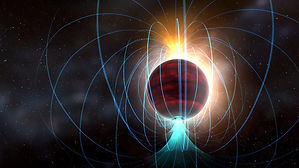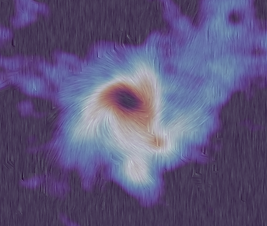Magnetic Fields from Clouds to Stars (Bfields-2024)
Monday, March 25, 2024 - Friday, March 29, 2024
Mitaka Campus, National Astronomical Observatory of Japan, Tokyo, Japan
Confirmed Invited Speakers
Evelyne Alecian (IPAG, France)
Laura Becerra (UIS, Colombia)
Lisa Bugnet (ISTA, Austria)
Erin G. Cox (CIERA, USA)
Barnali Das (CSIRO Space & Astronomy, Australia)
Alexandre David-Uraz (NASA/GSFC, USA)
Ray Furuya (Tokushima Univ., Japan)
Tsuyoshi Inoue (Konan Univ., Japan)
Anaelle Maury (CEA, France)
Kate Pattle (UCL, UK)
Shinsuke Takasao (Osaka Univ., Japan)
Yusuke Tsukamoto (Kagoshima Univ., Japan)
Bonnie Zaire (UFmG, Brazil)
Qizhou Zhang (CFA, USA)
Scientific Rationale of the Conference
The interstellar medium (ISM) is magnetized, and magnetic fields play a fundamental role in the growth of structures, leading to the formation of stars and their subsequent evolution. However, given the broad range of spatial scales and the combination of multiple physical processes involved at every evolutionary stage from clouds to stars, the relative importance of magnetic fields with respect to other forces is still not well described, neither observationally nor theoretically.
The magnetic field strength increases by multiple orders of magnitude from molecular clouds (approx. microgauss) to dense star-forming cores to protostellar disks and to stars (approx. kilogauss). This variation, however, occurs at a much slower rate than the increase in density and decrease in size, implying that a significant fraction of the initial magnetic flux must be dissipated during the star formation process. The detailed physical processes governing the magnitude, geometry, and impact of magnetic fields at different scales remain to be understood.
Scientific Organizing Comittee
Shantanu Basu (Western Ontario Univ., Canada)
Paulo Cortes (NRAO, USA)
Christiana Erba (ETSU, USA)
Josep Miquel Girart (ICE, Spain)
Kazunari Iwasaki (NAOJ, Japan)
Doug Johnstone (NRC, Canada)
Patrick Koch (ASIAA, Taiwan)
Masahiro Machida (Kyushu Univ., Japan)
Mary E. Oksala (CLU, USA)
André Oliva (Univ. Geneva, Switzerland)
Mehrnoosh Tahani (Stanford Univ., USA)
Koh Takahashi (NAOJ, Japan)
Kengo Tomida (Tohoku Univ., Japan)
Conference Organizers
Local Organizing Comittee
Yu Cheng
Raiga Kashiwagi
Jeong-Gyu Kim
Junhao Liu
Yoshiaki Misugi
Kaho Morii
Yuri Nagai
Piyali Saha

Dana Berry (NRAO/AUI/NSF) / SkyWorks
Objectives of the conference
The aim of the conference is to share and discuss recent observational and theoretical results on the magnetic properties of clouds to molecular filaments, cores, disks, and stars. In particular, the conference will provide the opportunity for researchers in both fields of star formation and stellar evolution to meet and discuss the interconnection between the magnetic field and the various physical processes at different scales from clouds to stars.

ALMA (ESO/NAOJ/NRAO), Sanhueza et al.
Key questions to be addressed during the conference
Q1: What is the role of the magnetic field in the growth of ISM structures leading to star formation? Are there particular density, mass, and/or spatial scales at which the relative importance between the magnetic, turbulent, and gravitational energies change? Are these transition scales universal?
Q2: What are the physical processes that dominate the evolution and diffusion processes of the magnetic field strength from clouds to stars? At what scales and densities does non-ideal magnetohydrodynamics (MHD) play an important role?
Q3: What is the origin of the magnetic field observed in stars? Is it inherited from the properties of the dense cores out of which stars are formed? How to disentangle between inheritance and evolution scenarios for stellar magnetic fields?
Q4: How to combine different observational methods to trace the 3D magnetic field structure and strength in the ISM and in stars? How to quantitatively compare observations with simulations?
The scientific sessions
Session 1: Magnetic fields in molecular clouds and filaments
Session 2: Magnetic fields in low- and high-mass dense cores
Session 3: Magnetic fields from cores to disks
Session 4: Magnetic fields from disks to protostars
Session 5: Magnetic fields in low-mass stars
Session 6: Magnetic fields in high-mass stars
Session 7: New observational and computational methods/instruments